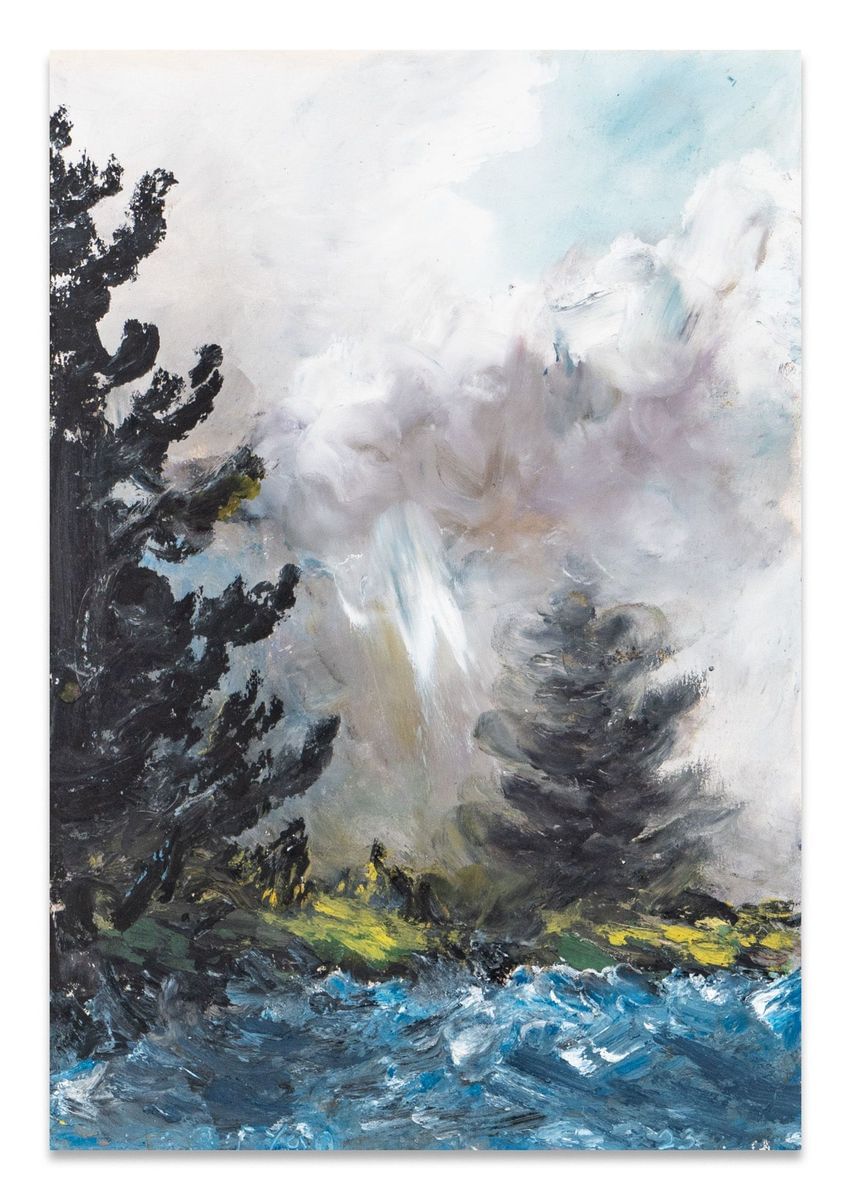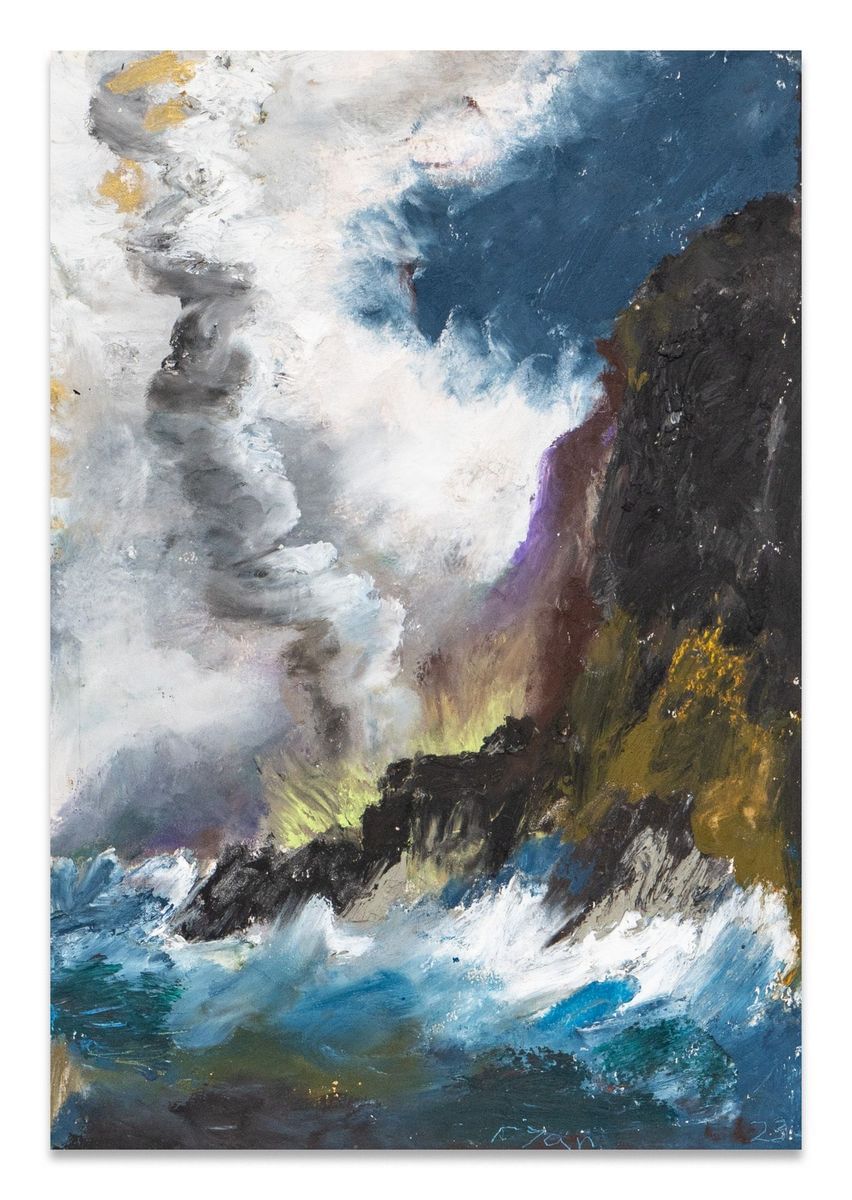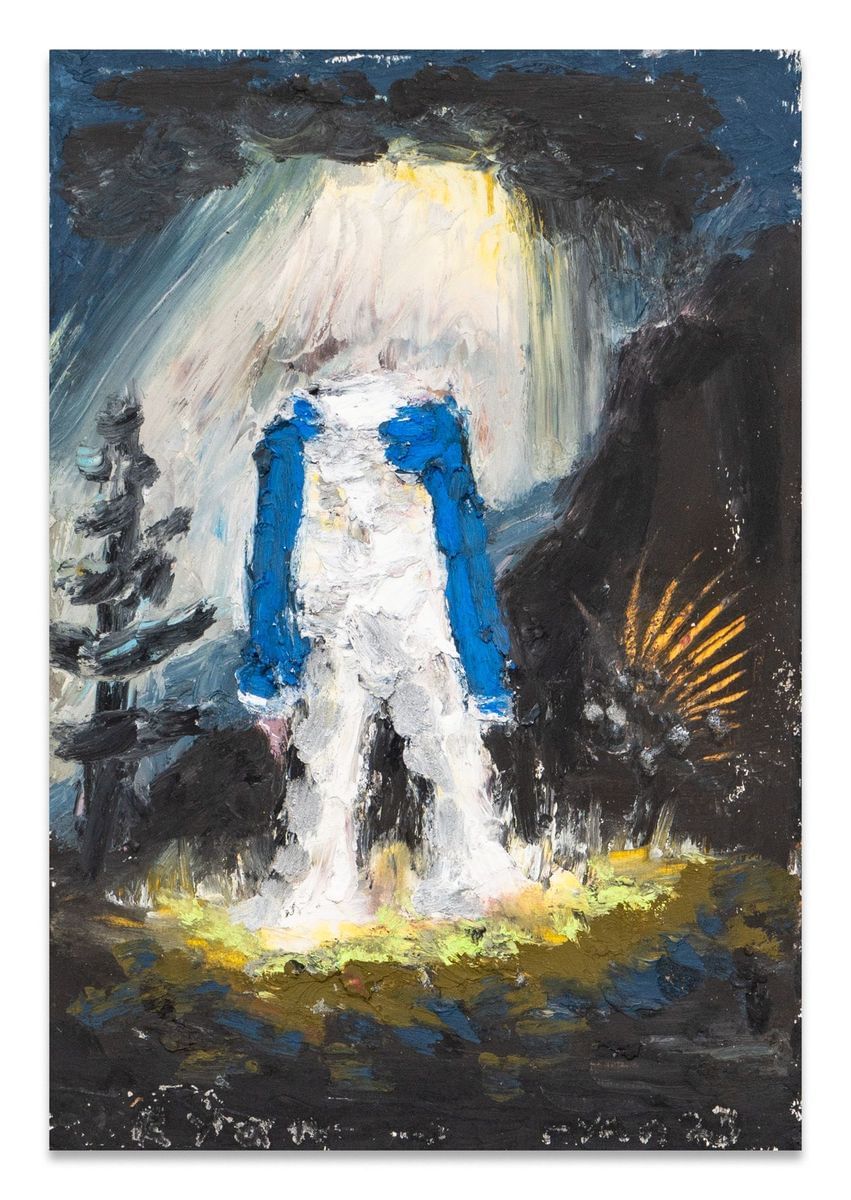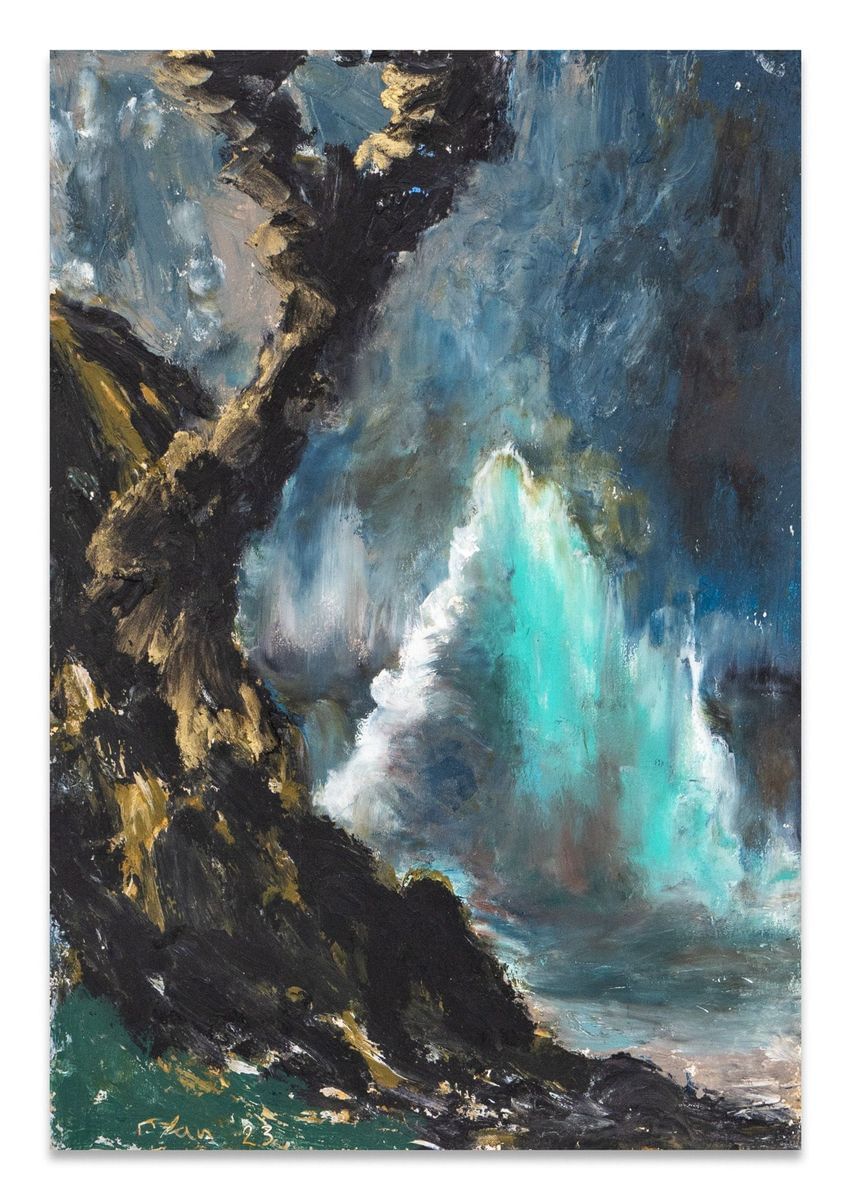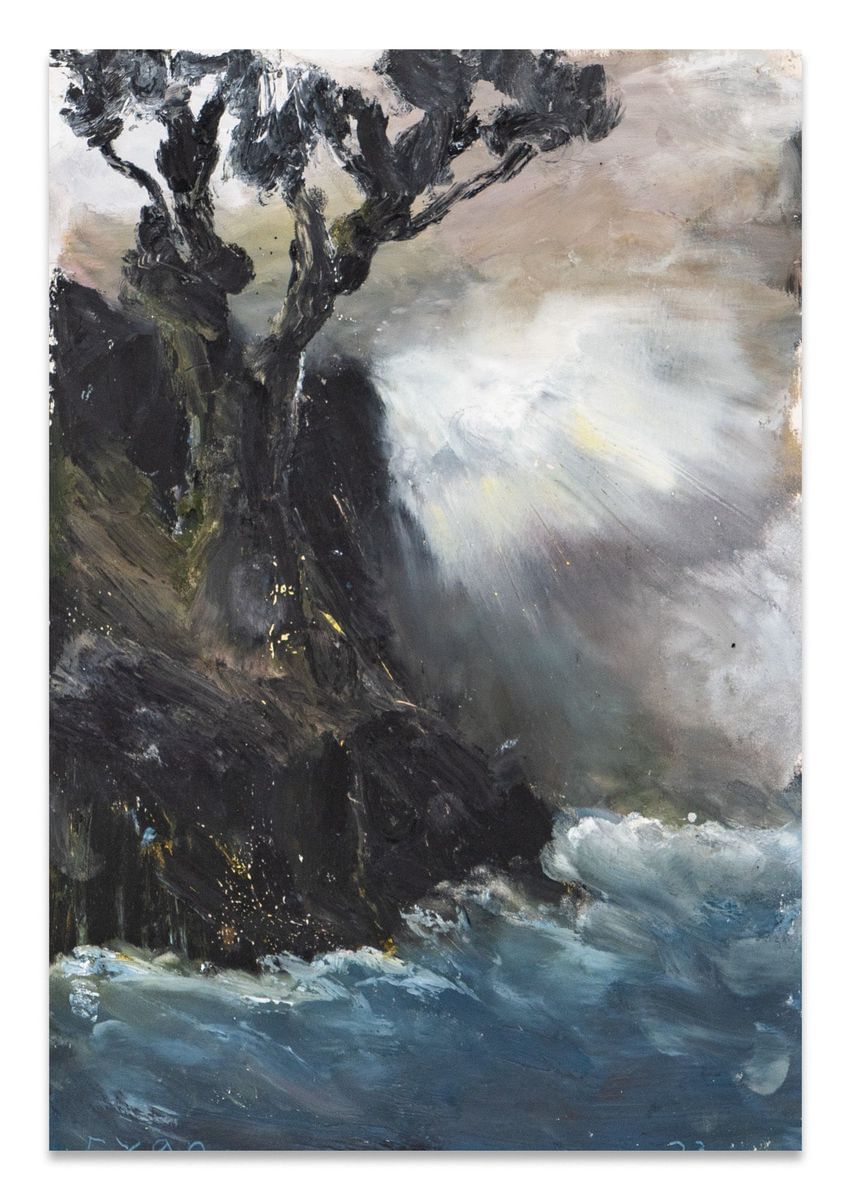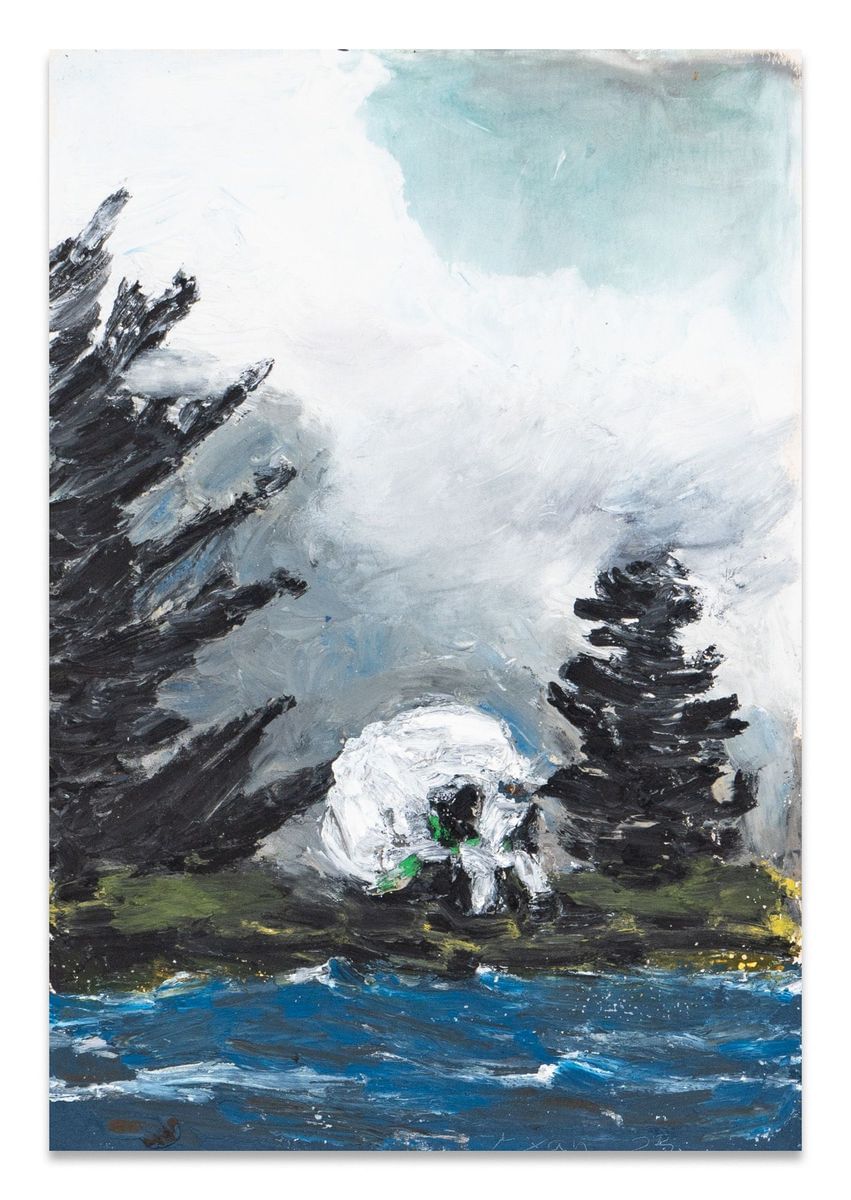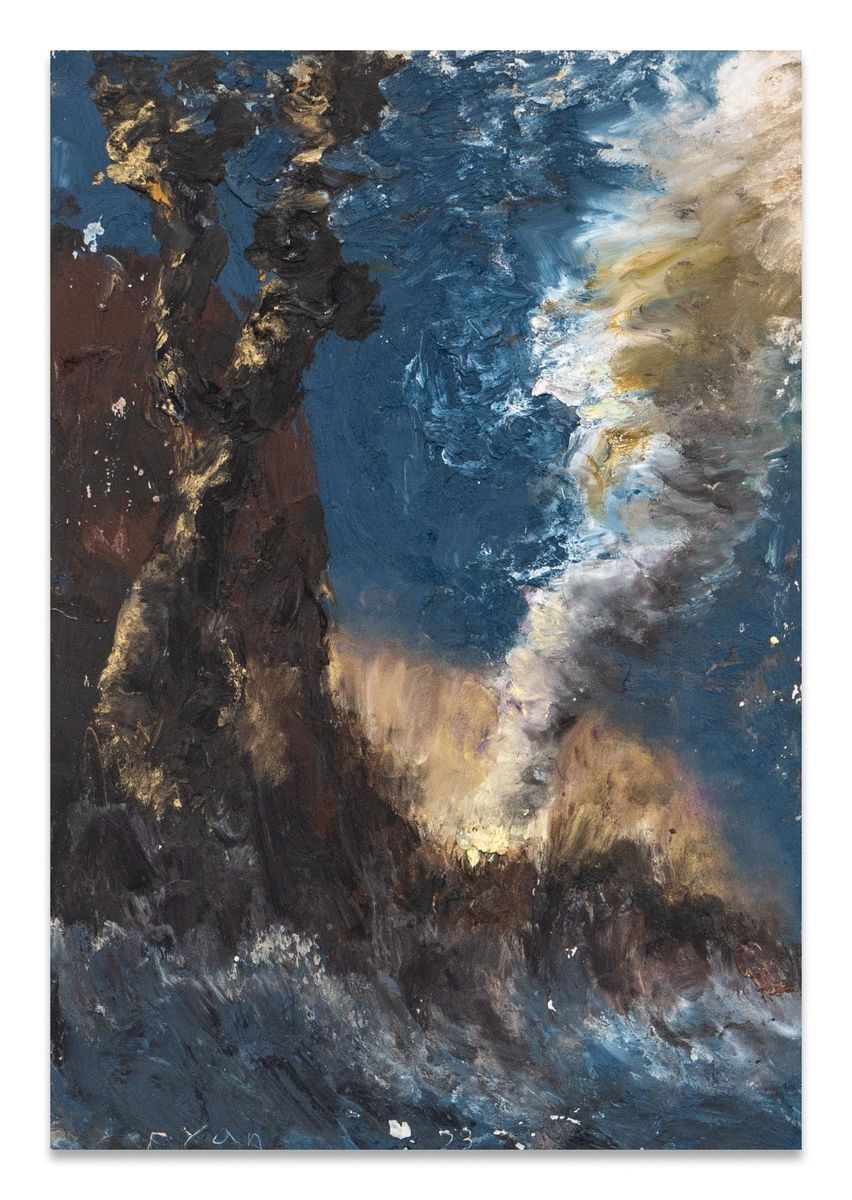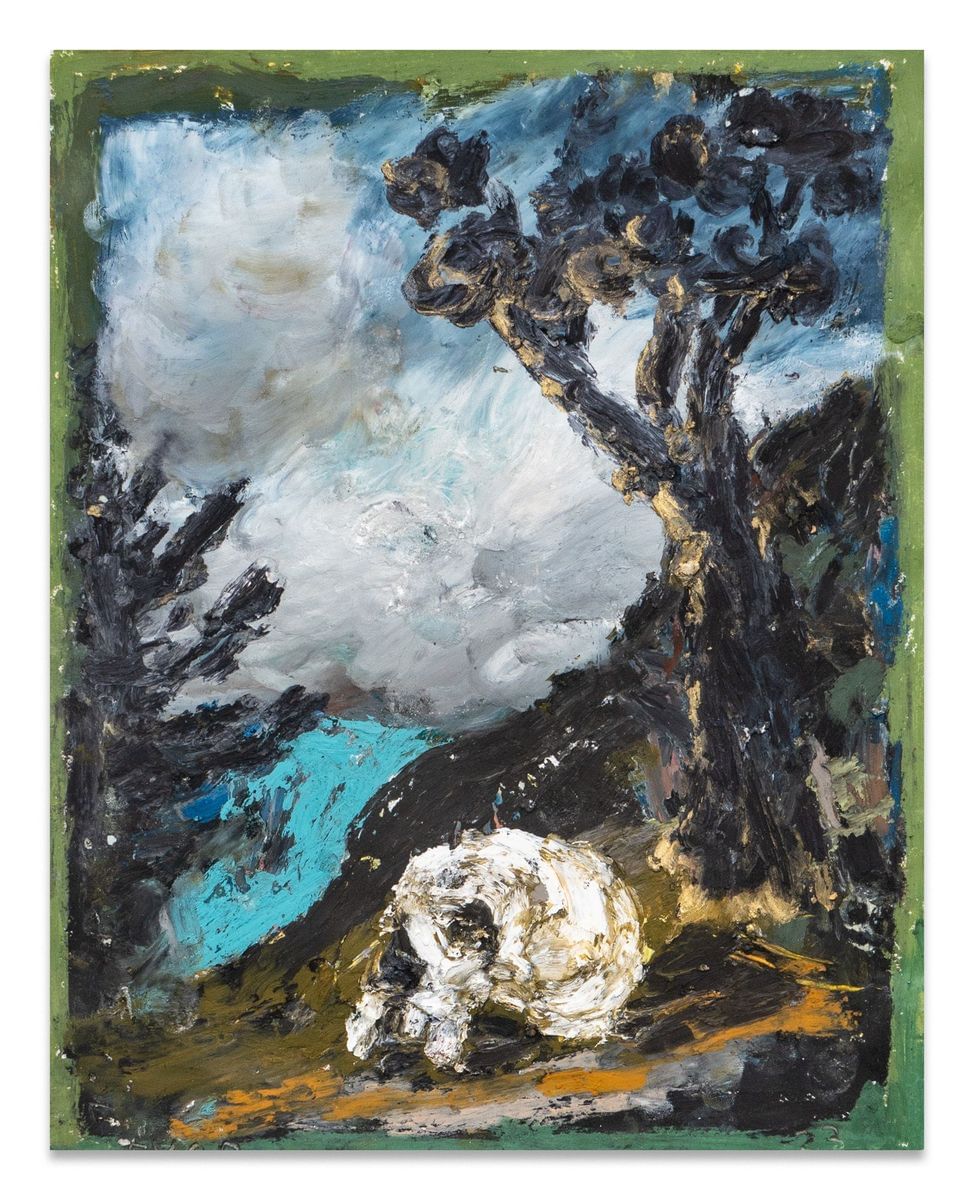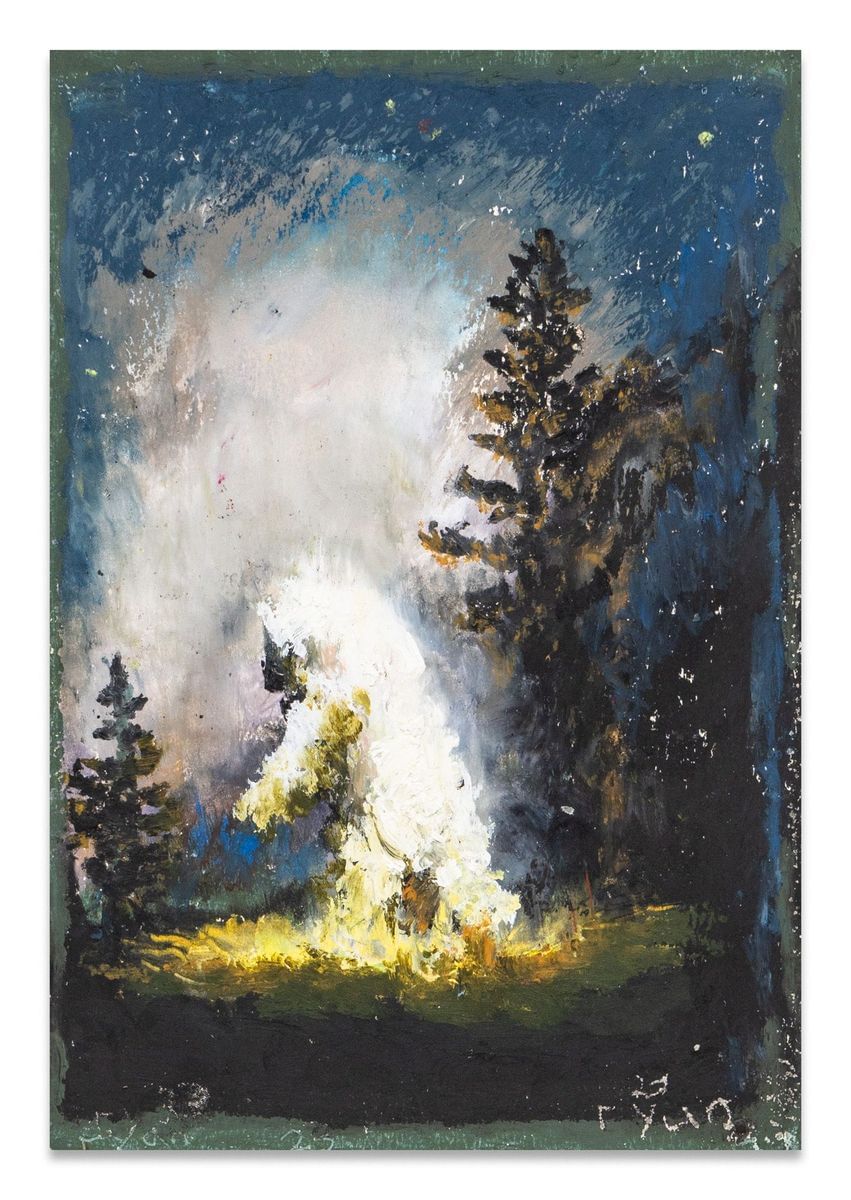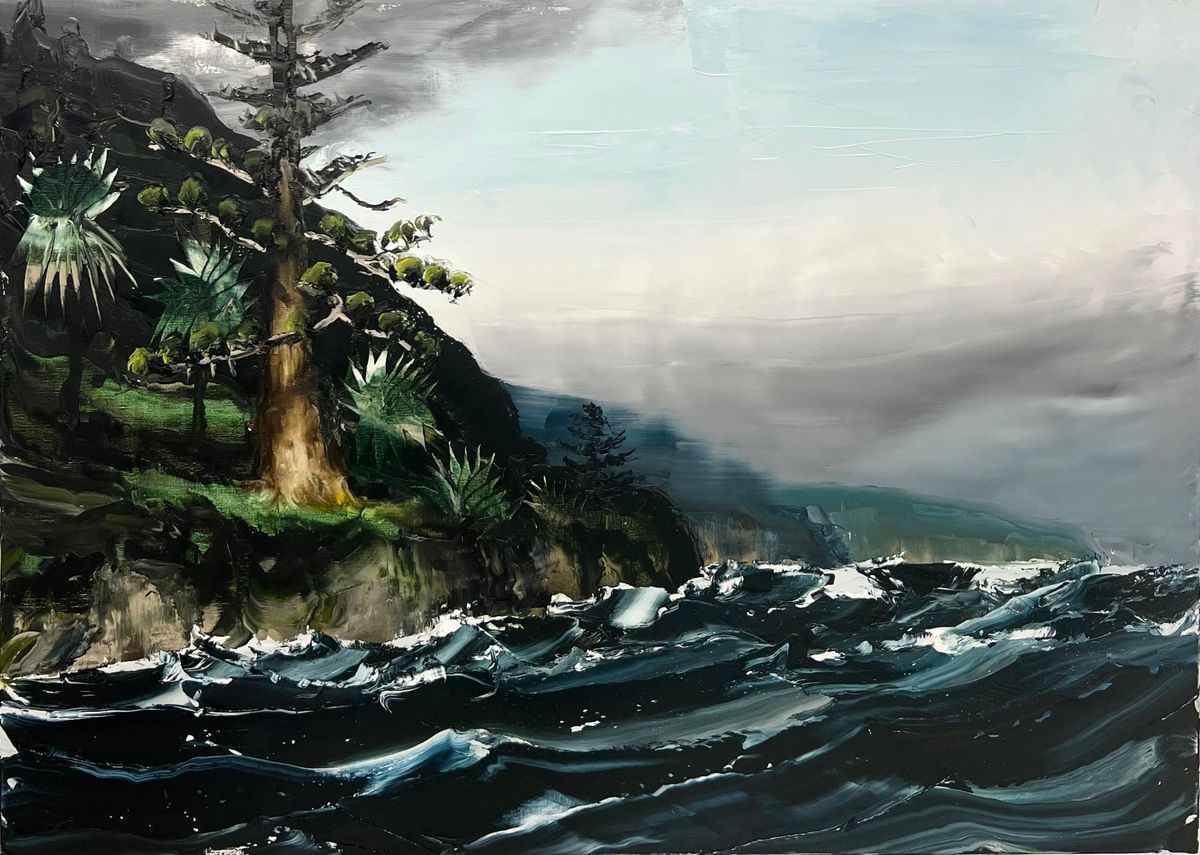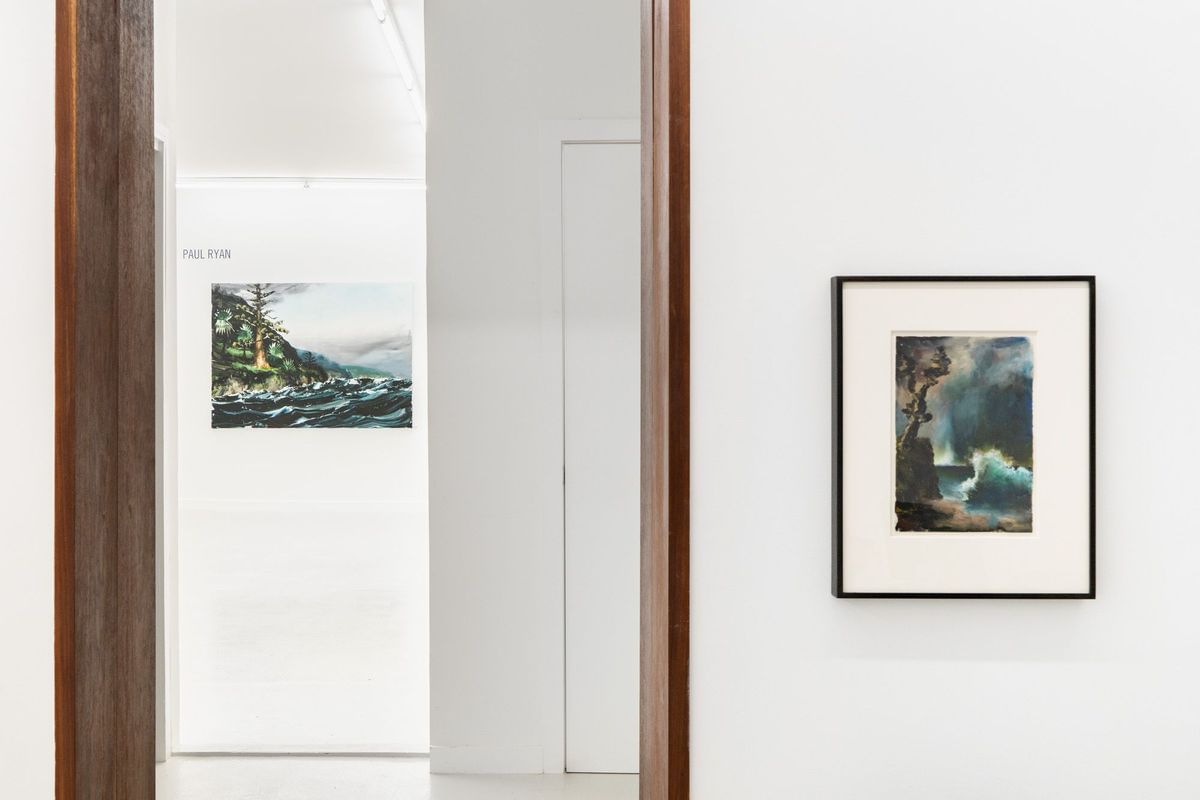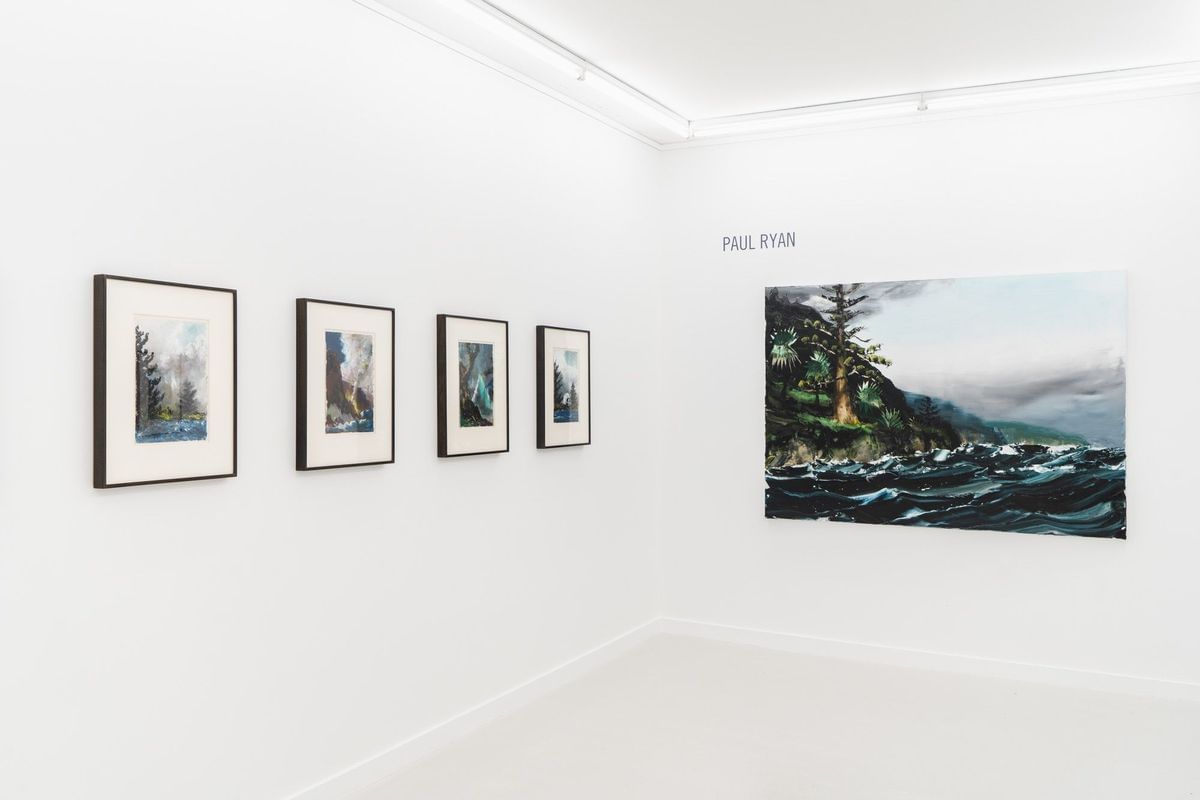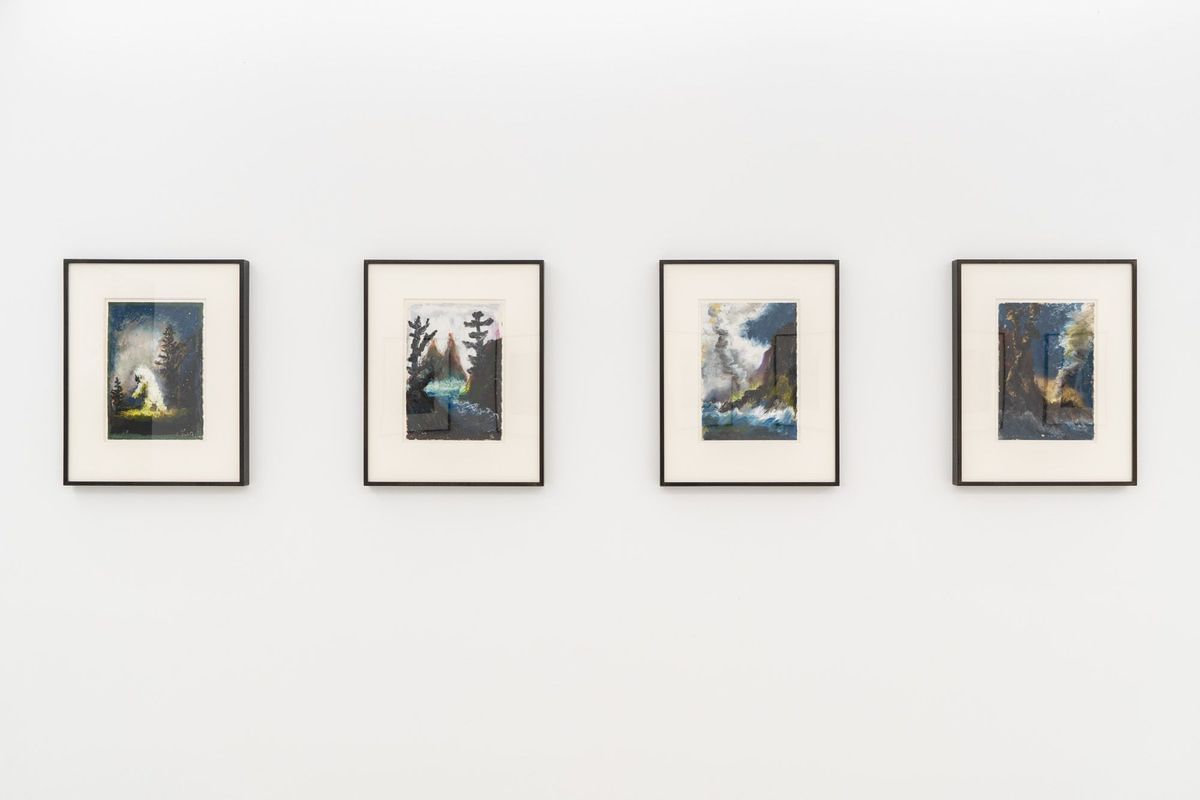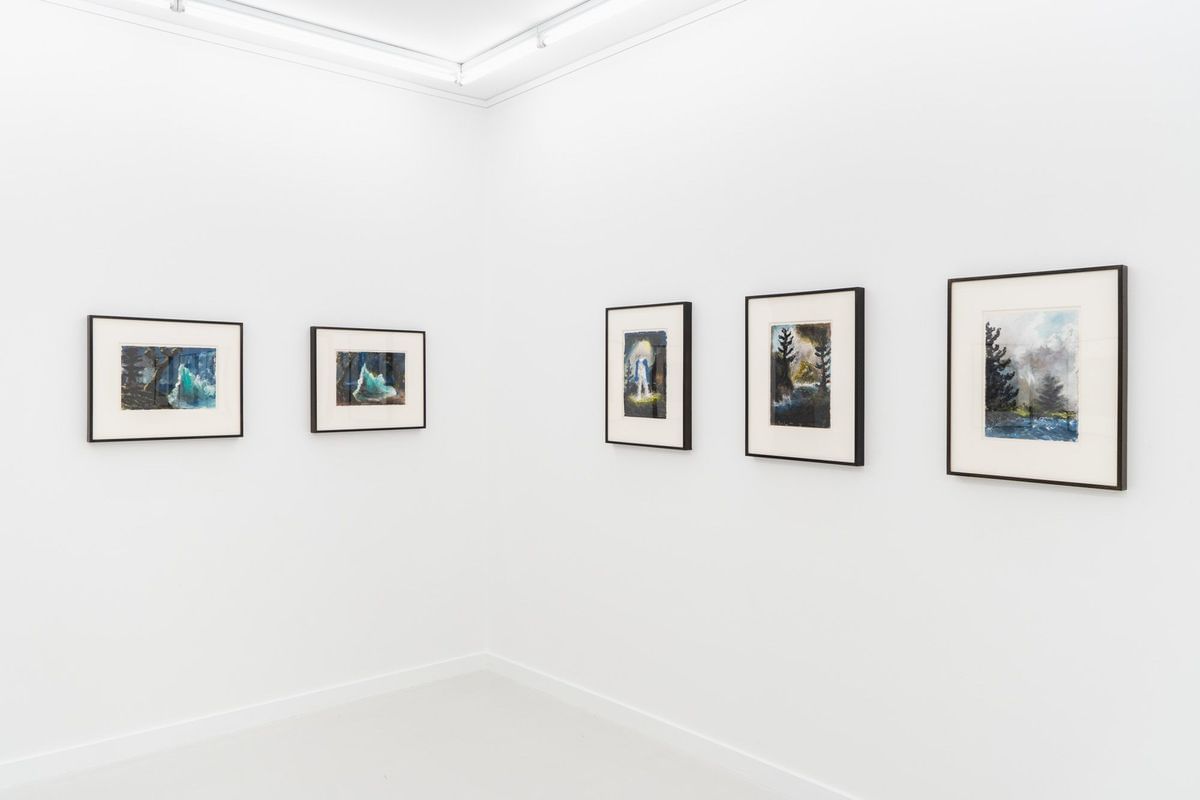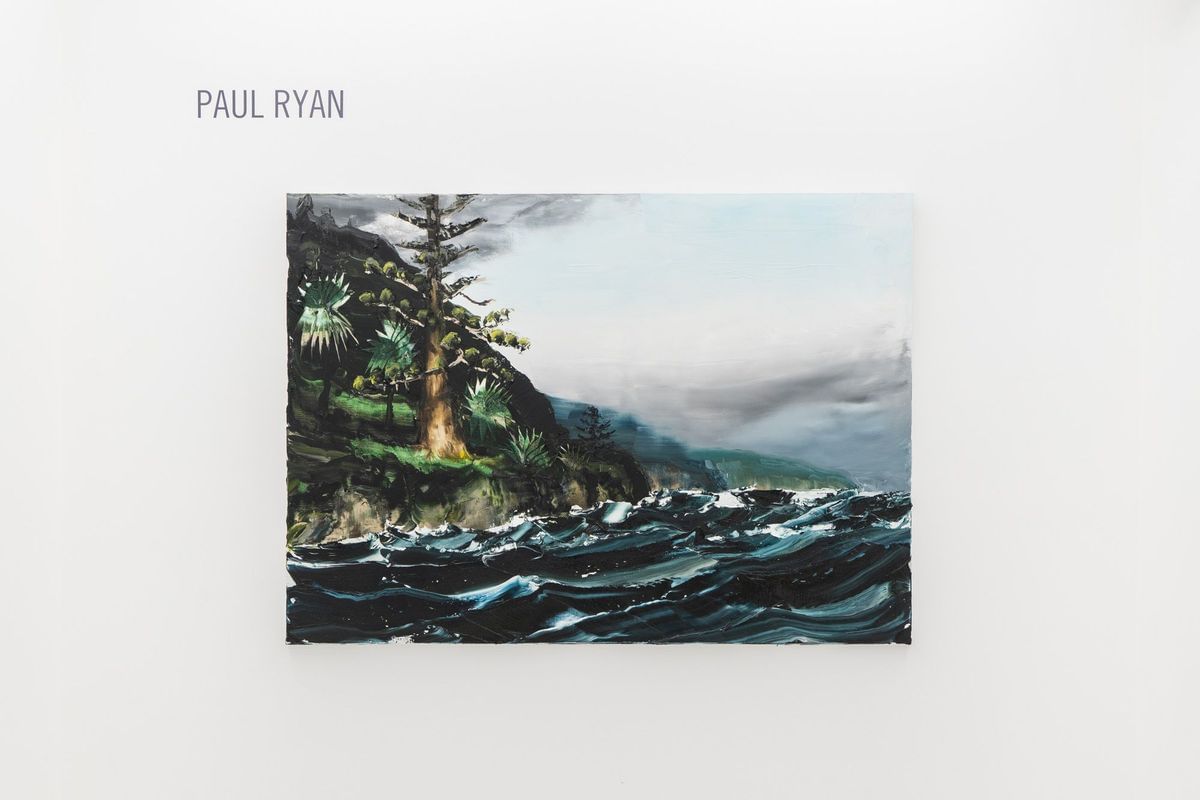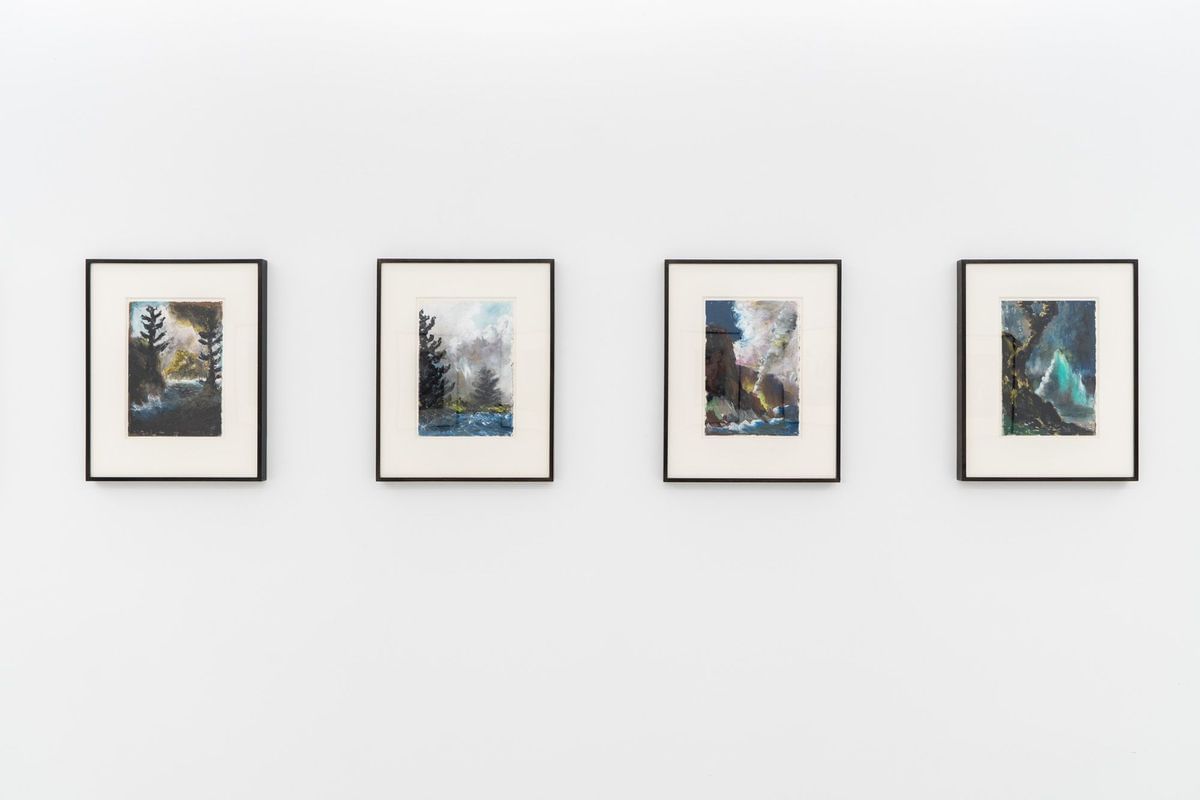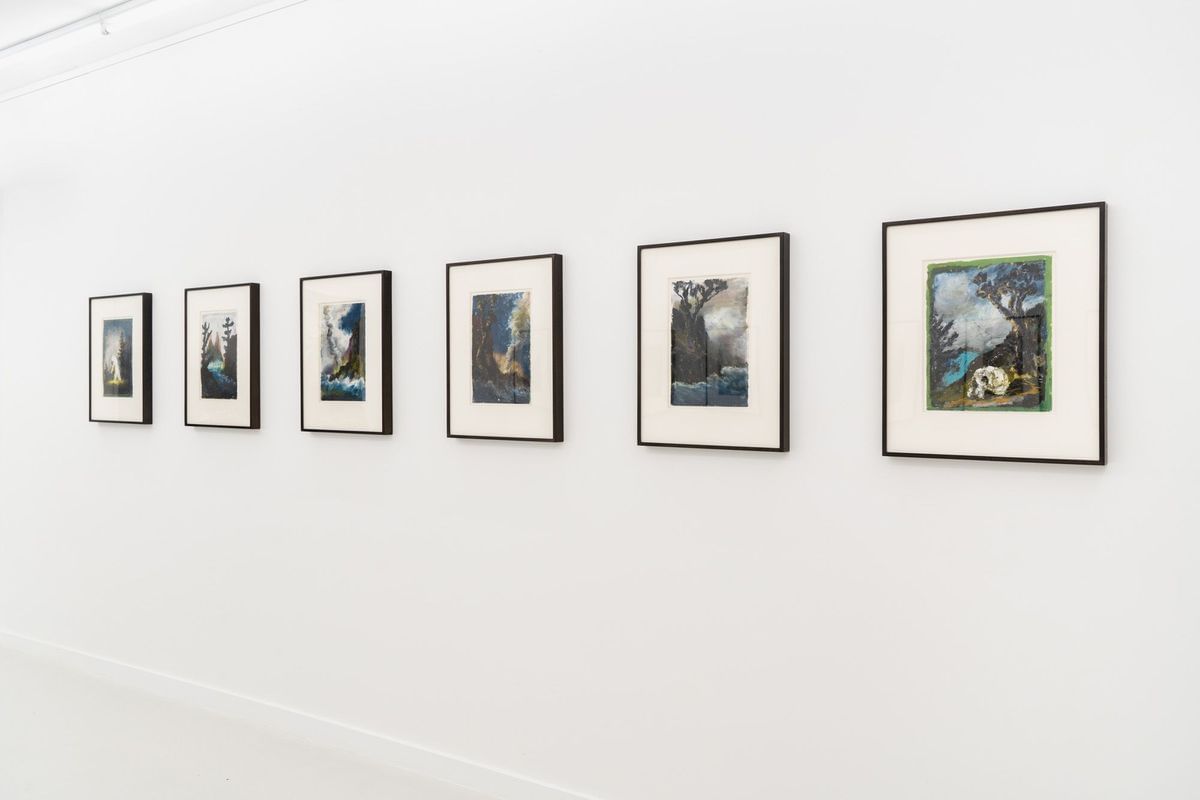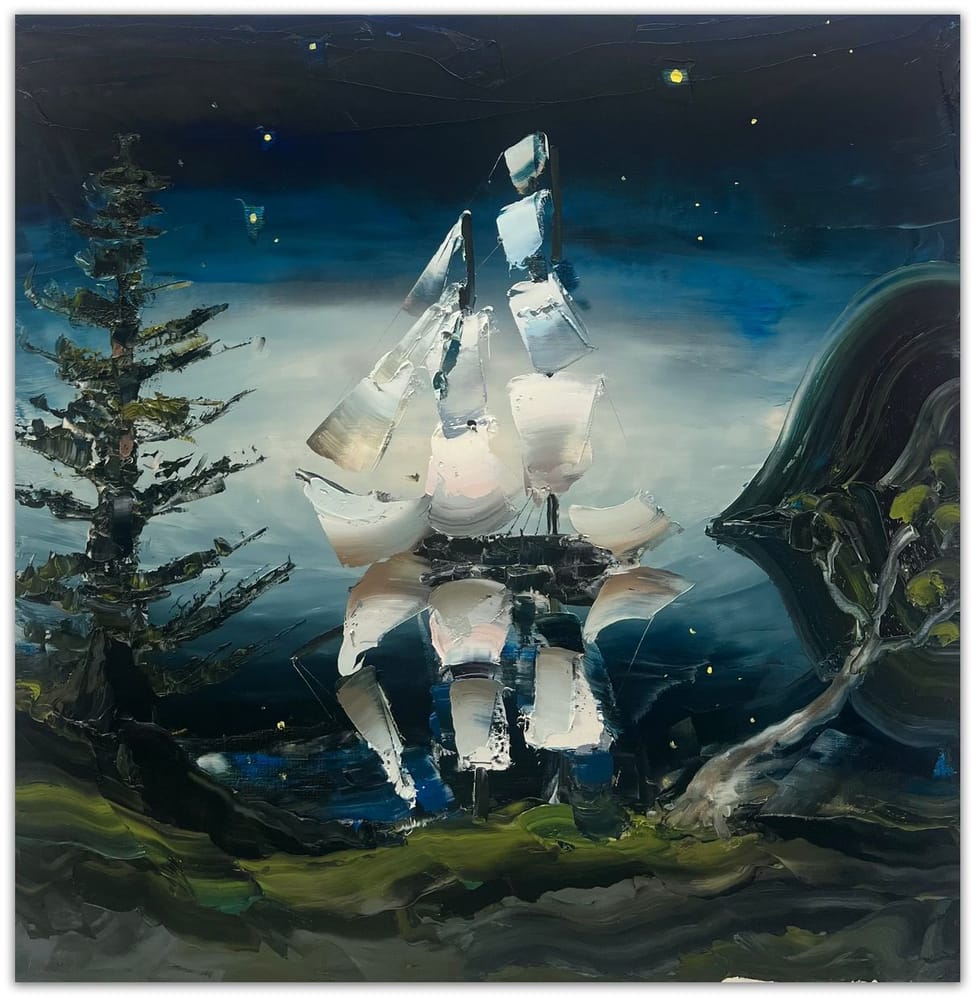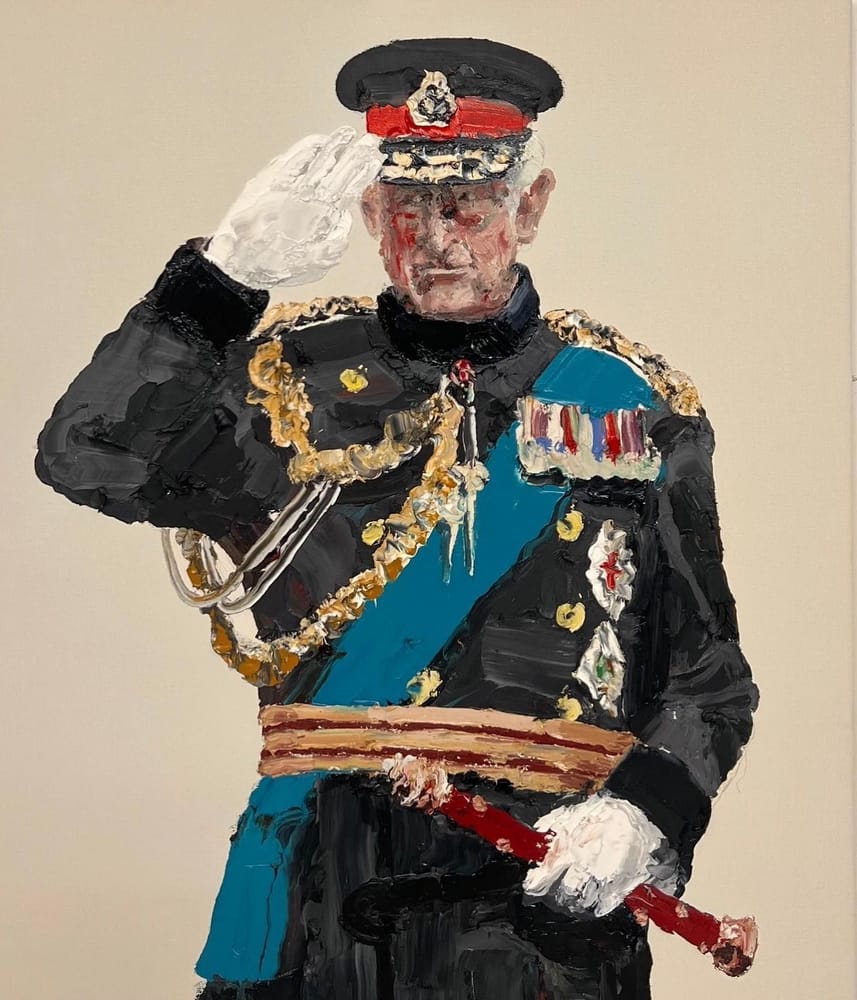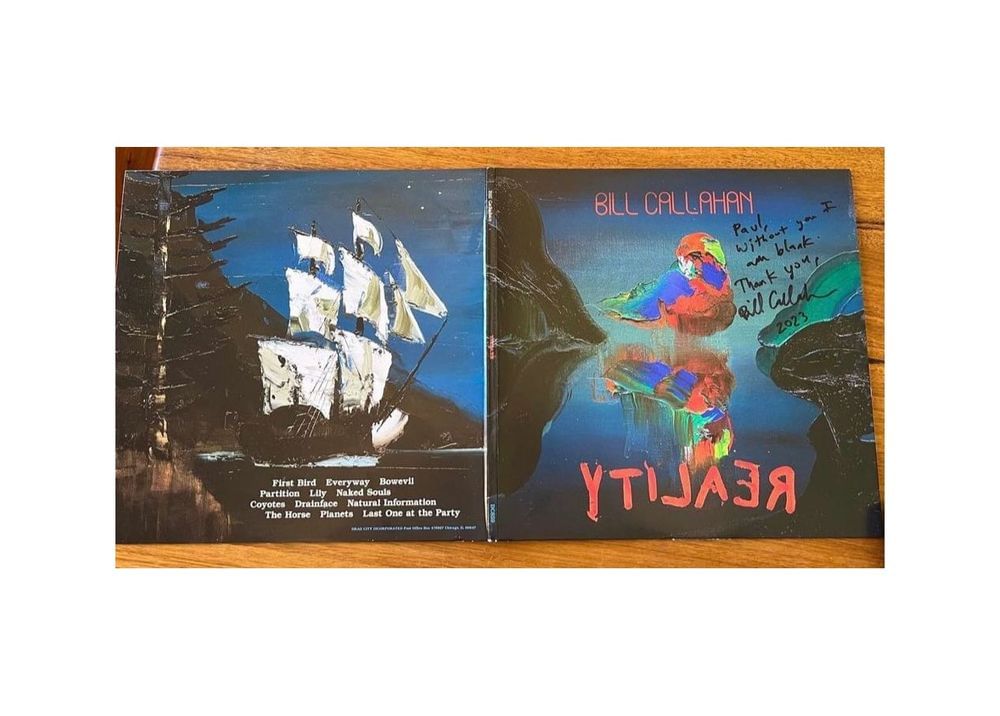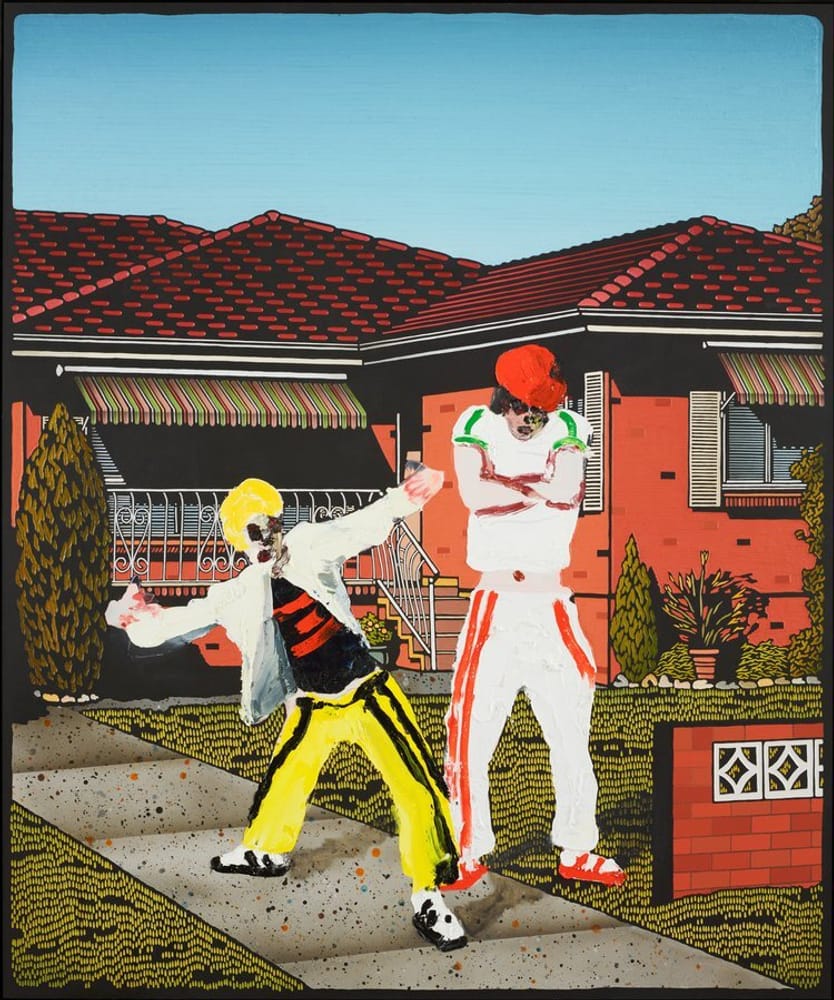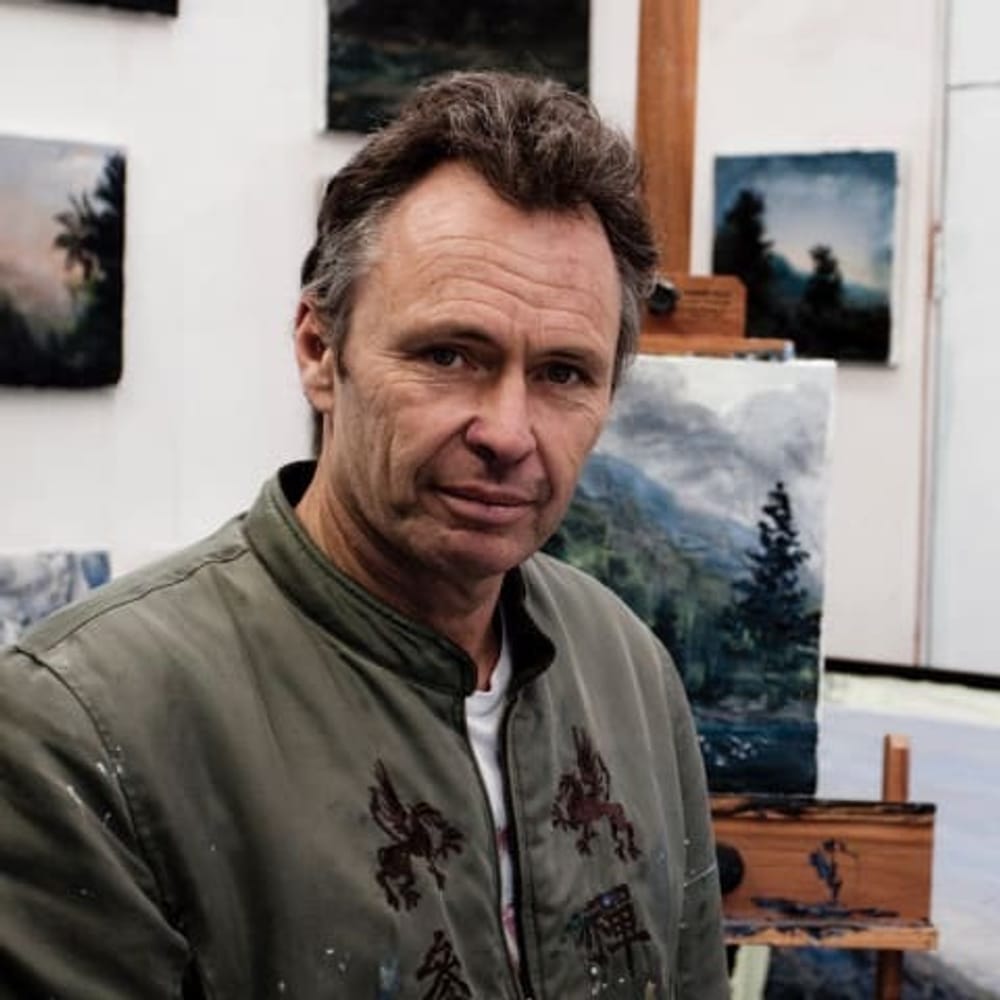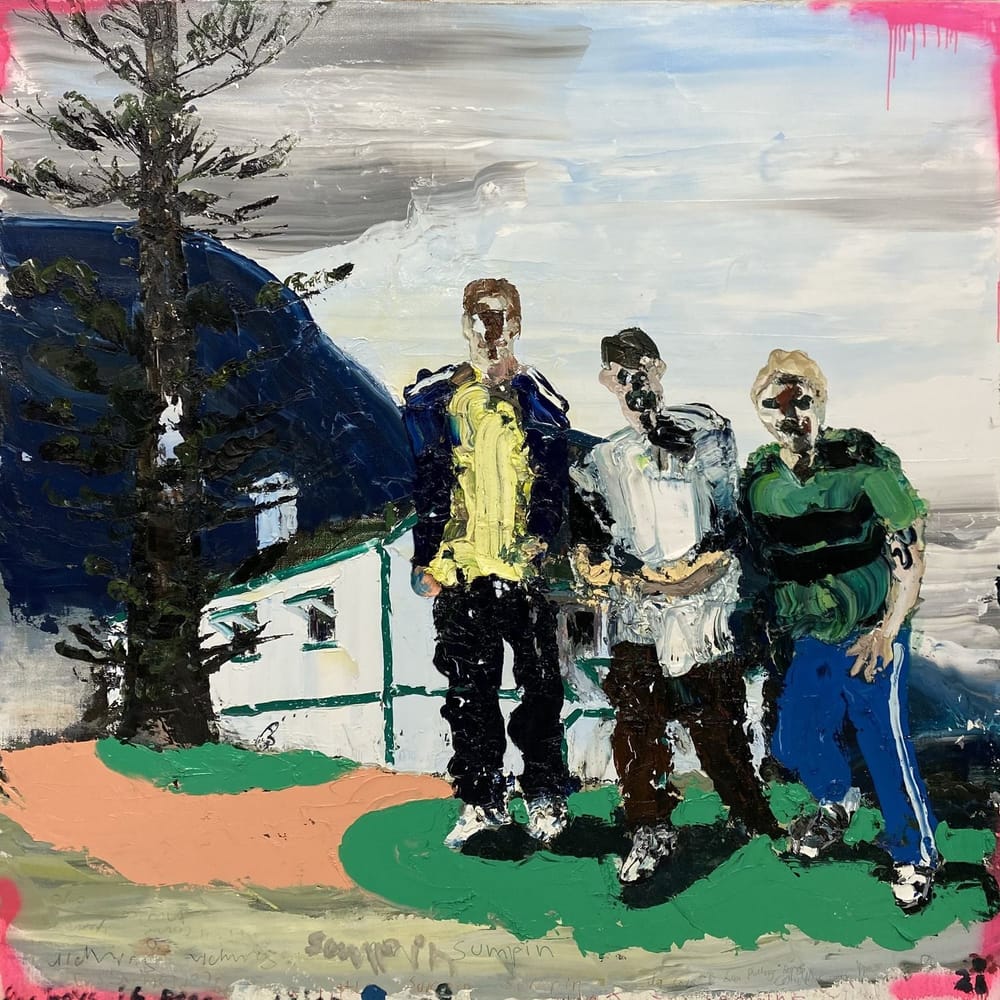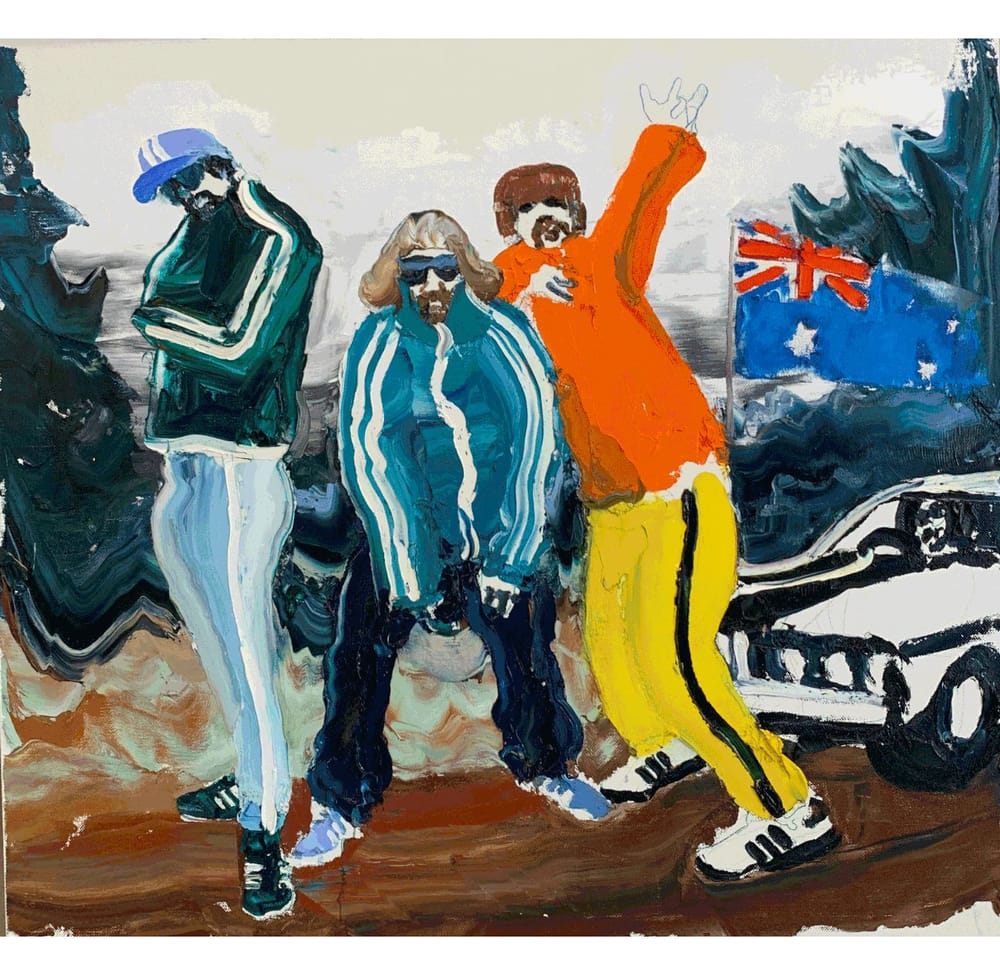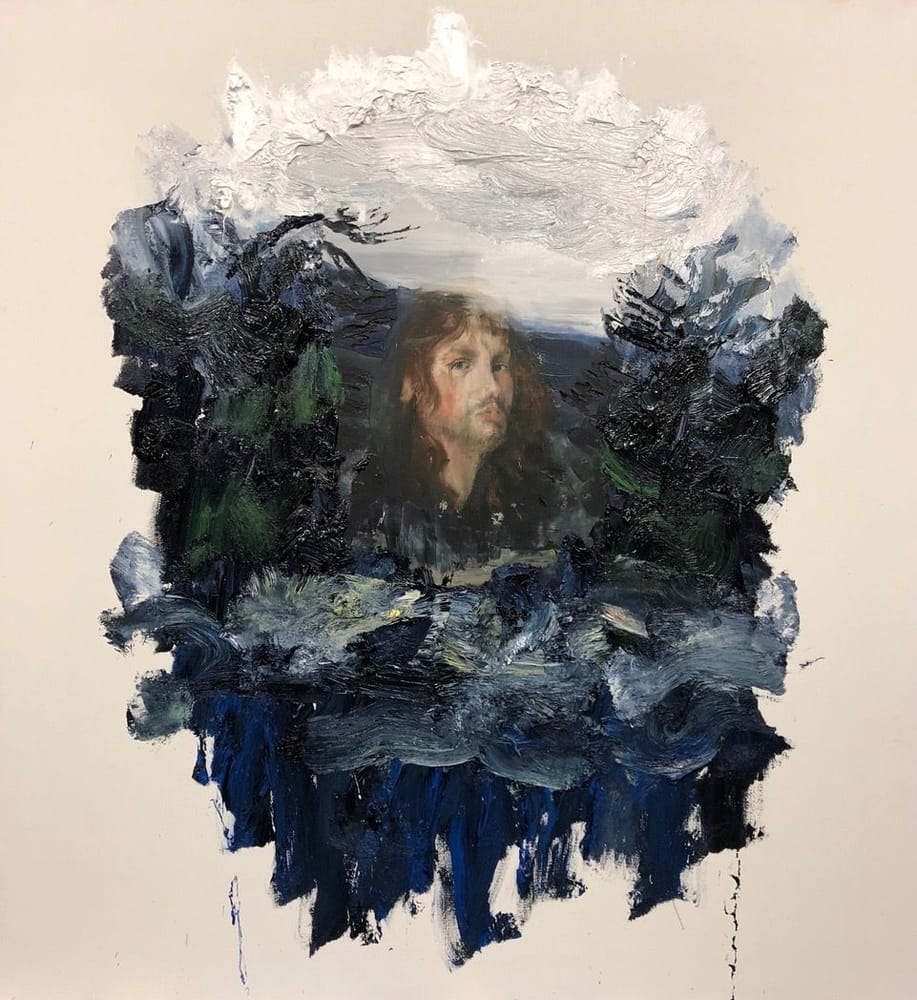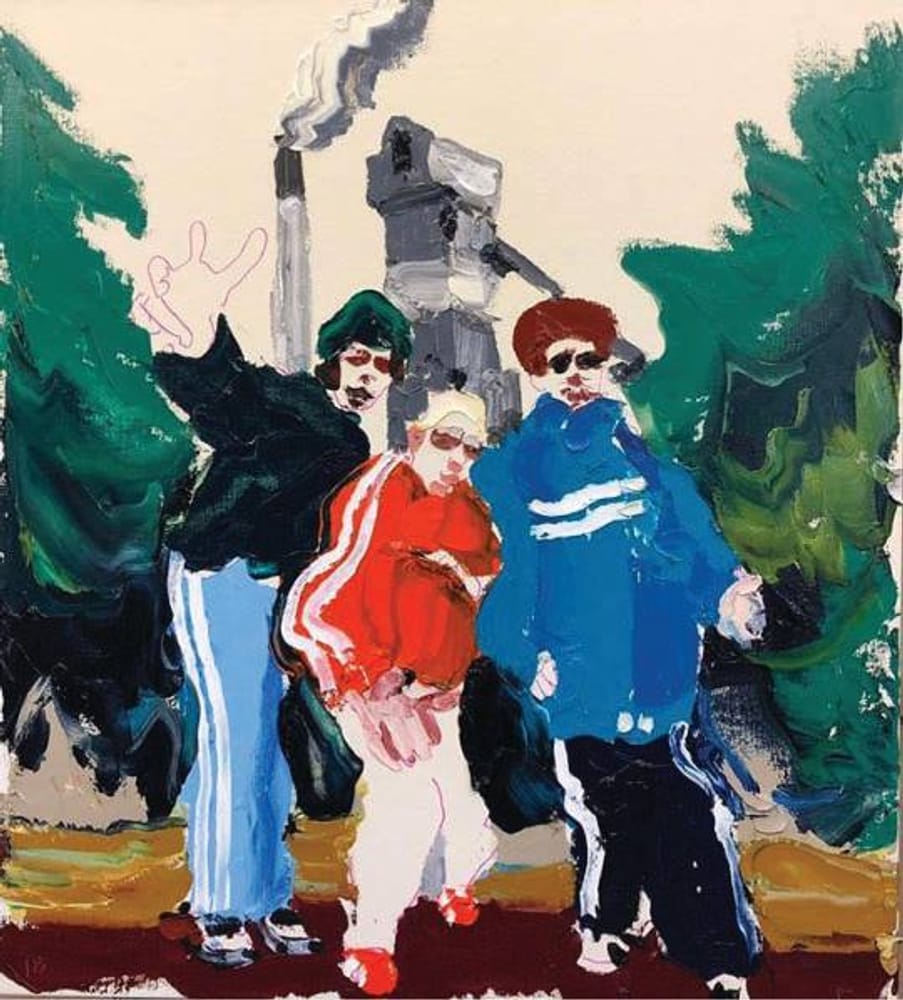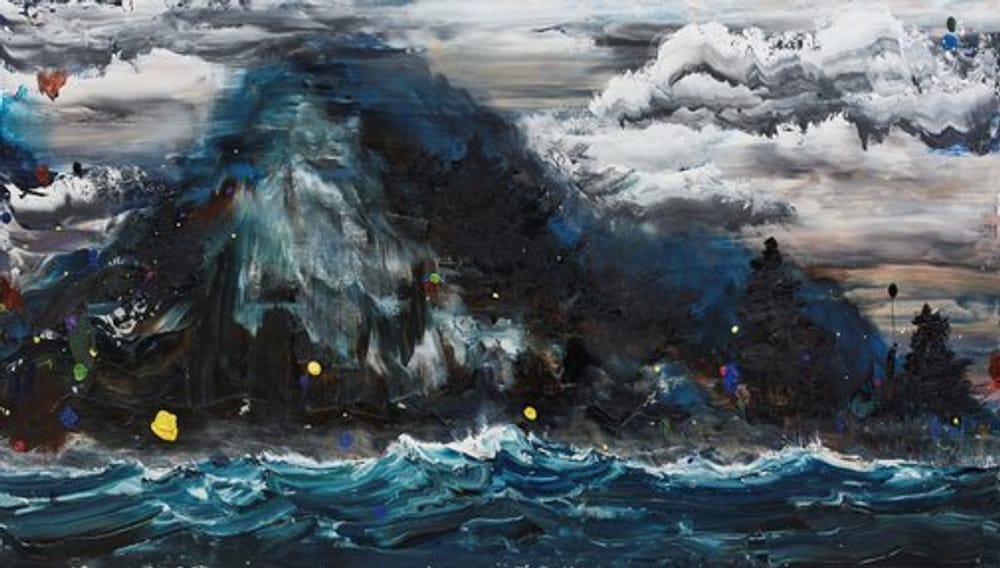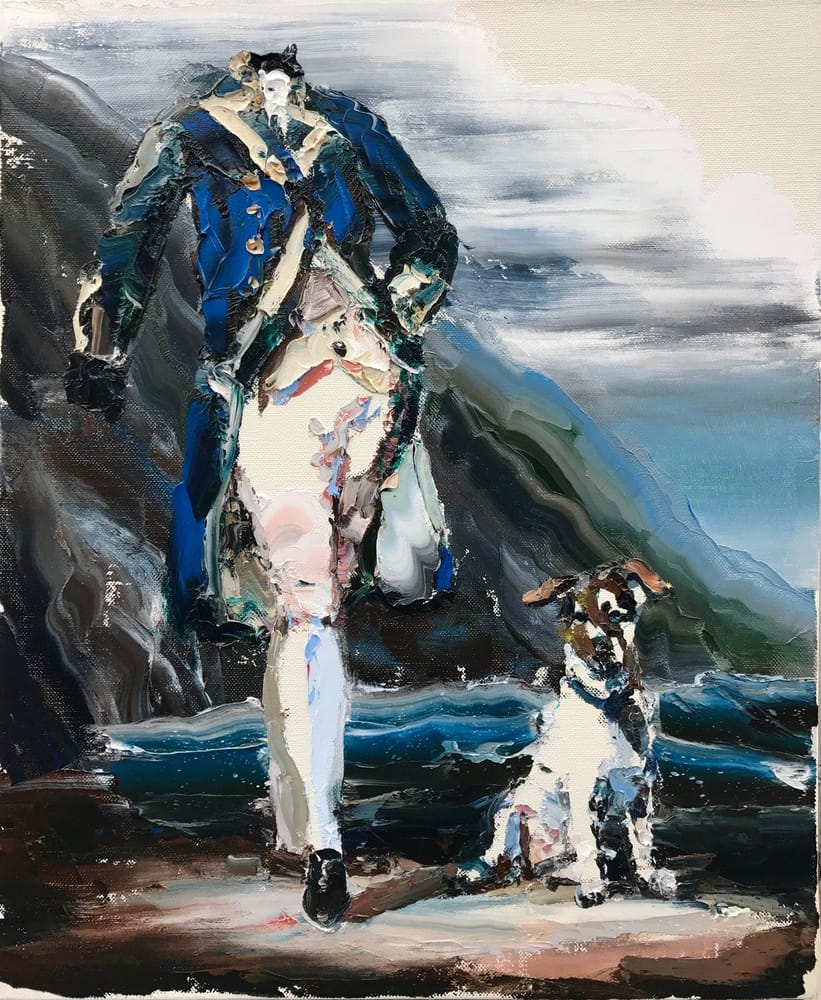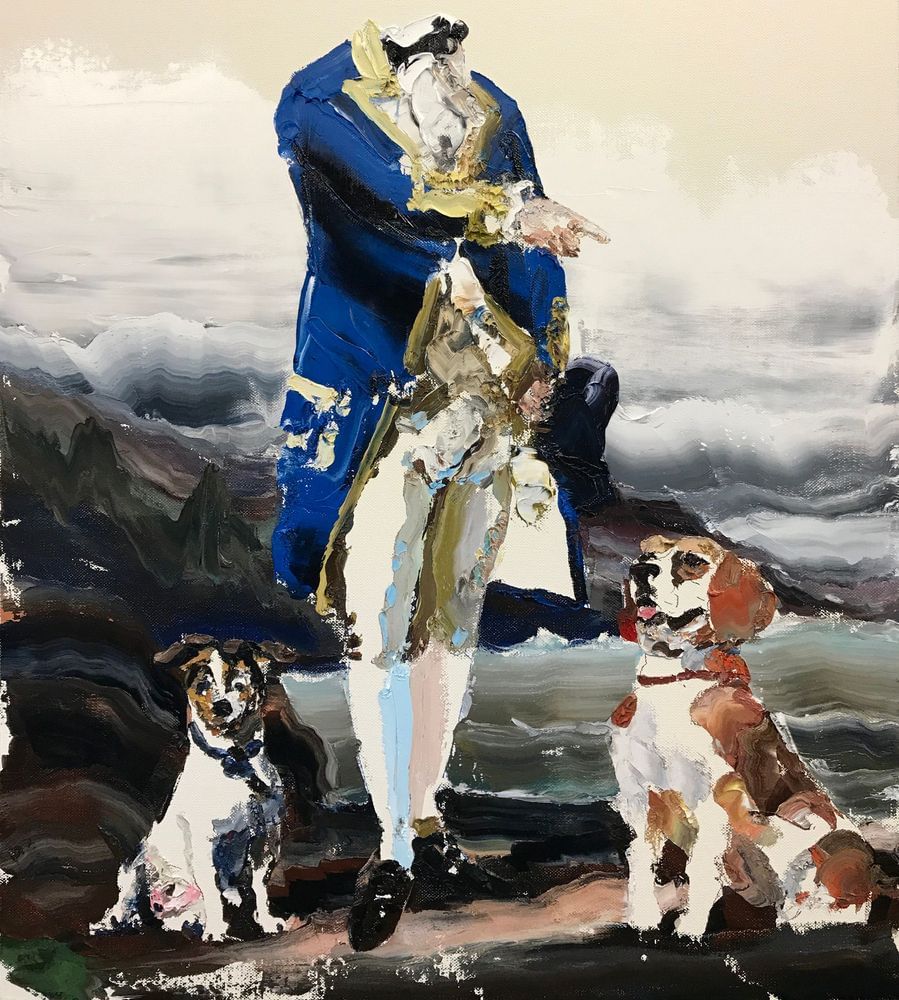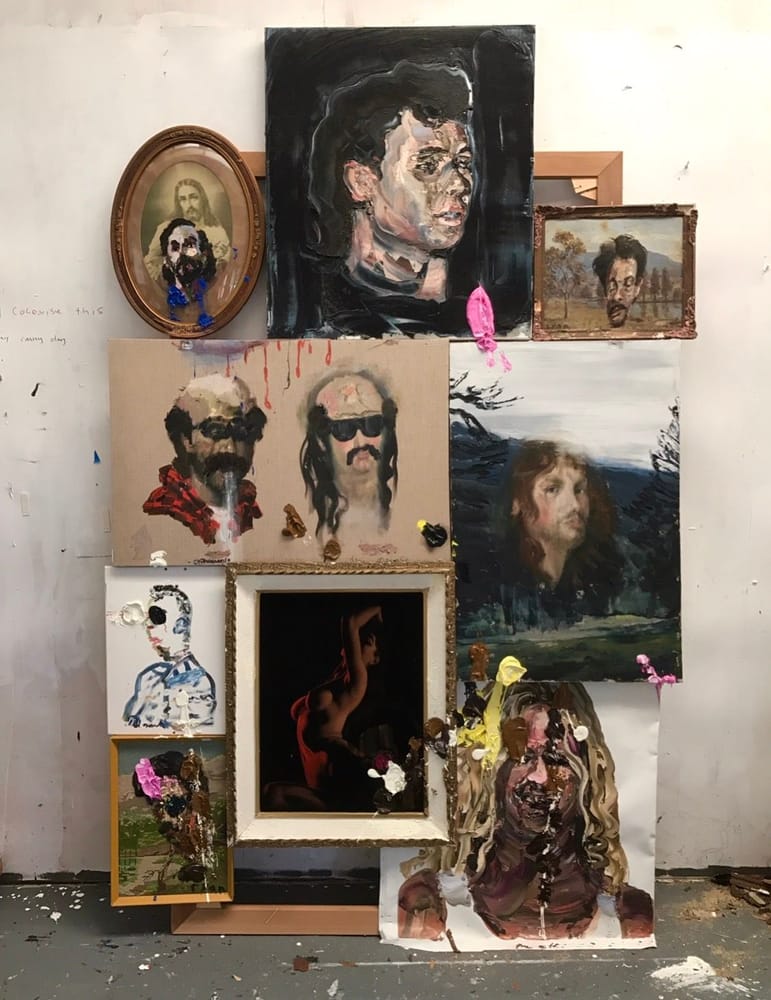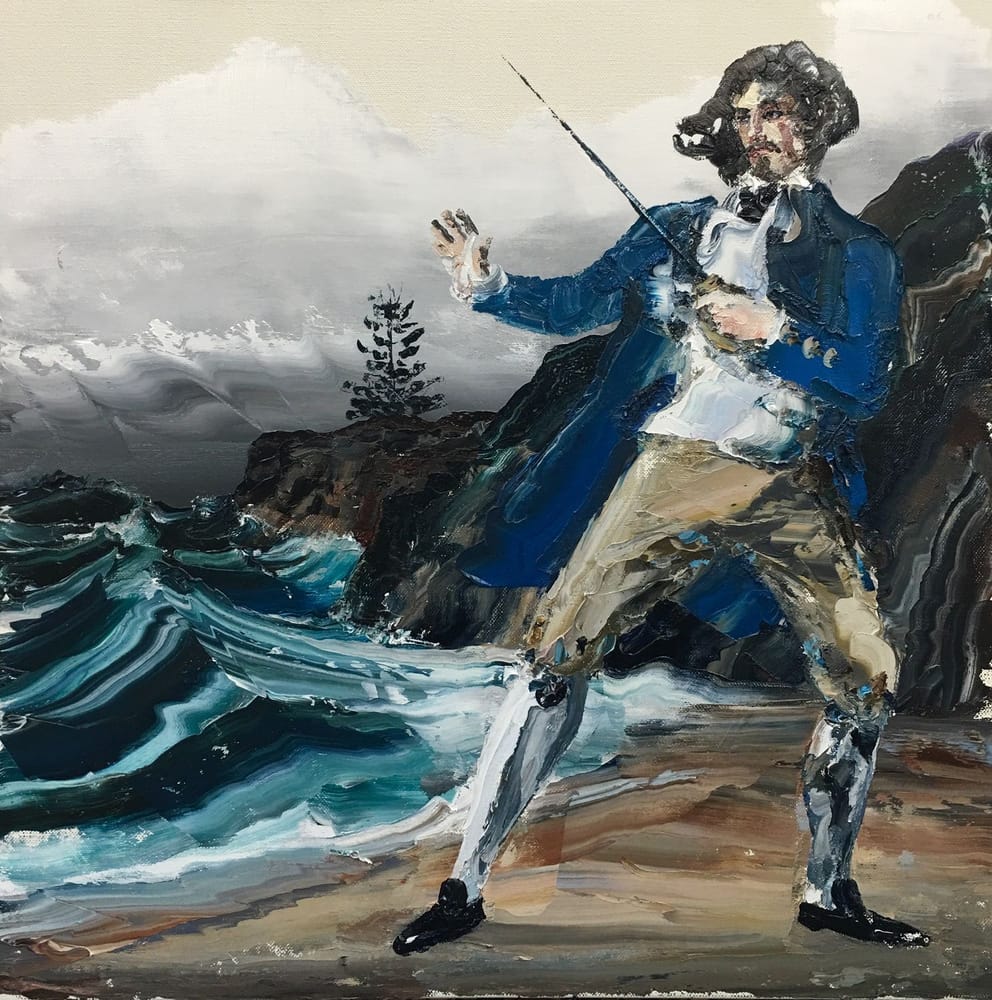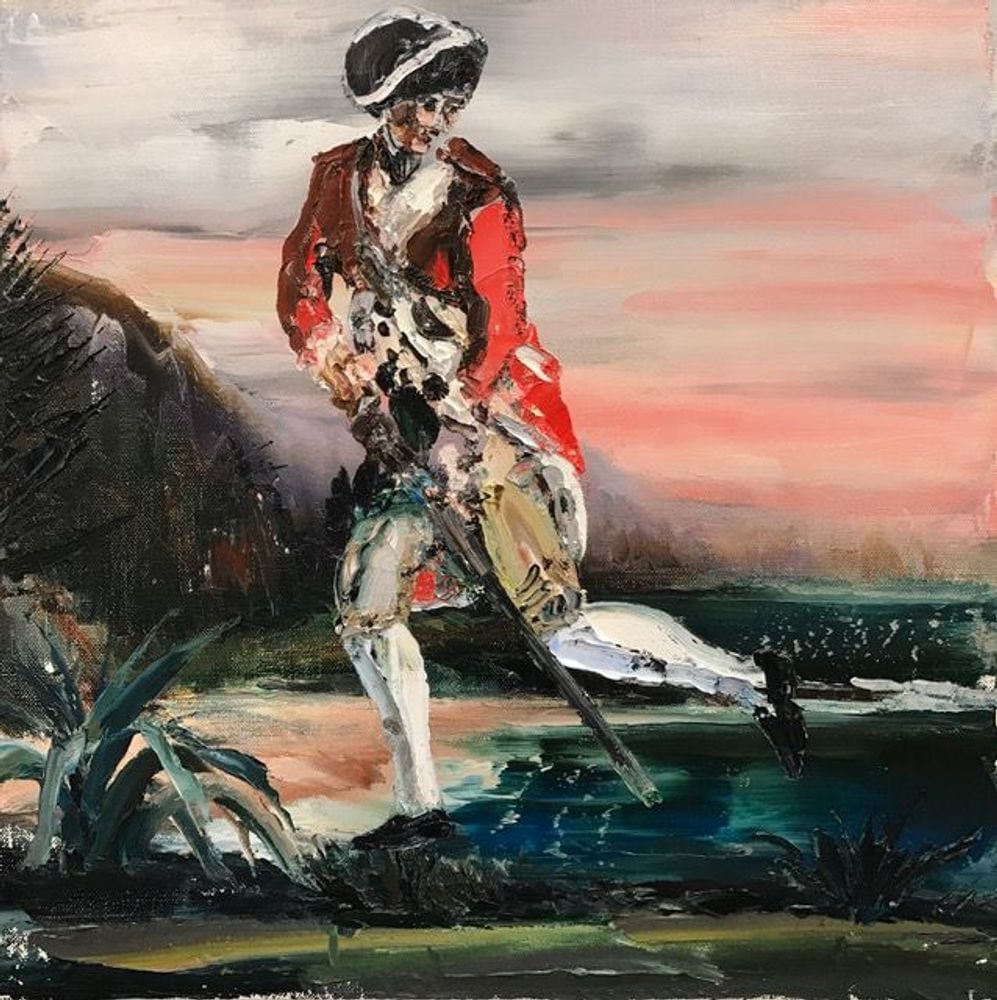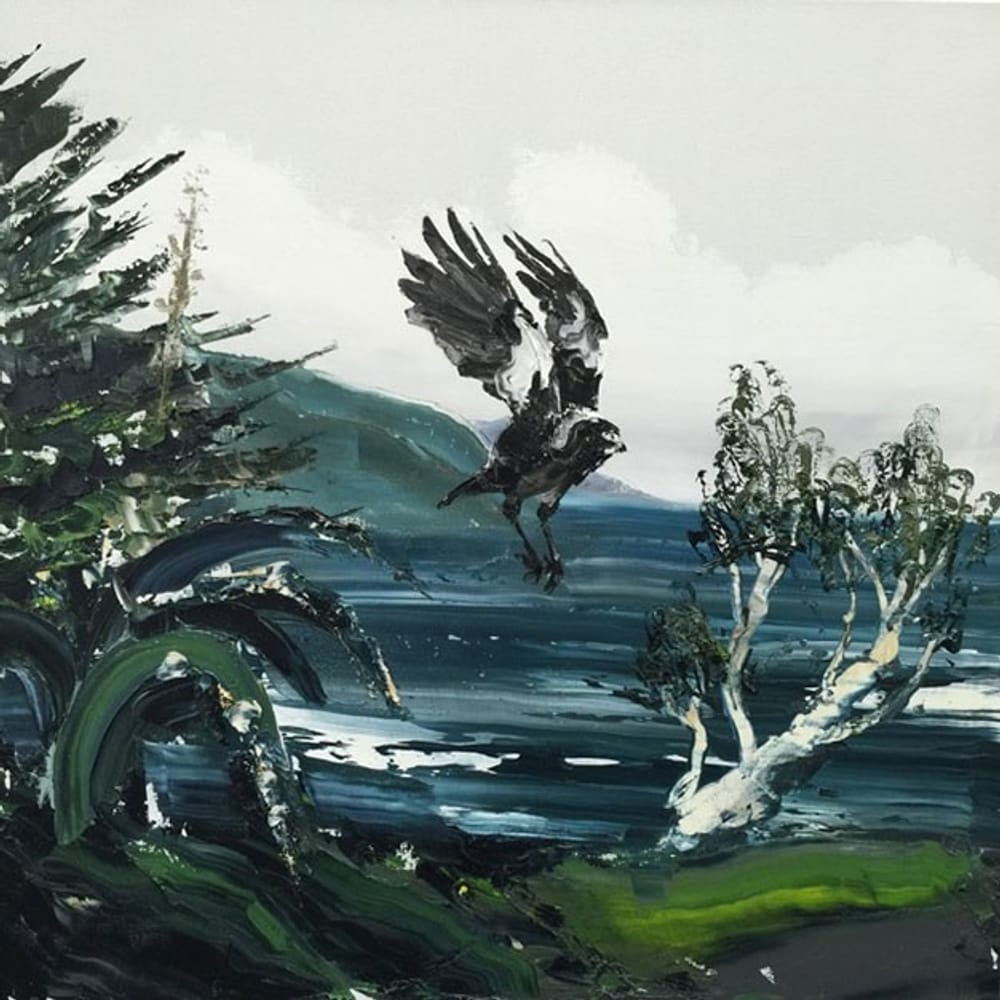When Paul Ryan paints the landscape, it’s not the scenery so much as the forgotten histories of his local area that he seeks to explore. Never straying far from his home base in Thirroul, a suburb of Wollongong noted for post-colonial industries including whaling, logging, and mining, Ryan repeatedly finds himself searching for the footprints of the people who came before him. Multi-layered contemplations on the impact of invasion and colonisation, his work examines the damage to natural and social worlds that once existed in the dark, hilly bushland of the NSW South Coast, and the alternative realities that might otherwise have been.
A keen surfer, Ryan is afforded a dramatic panoramic view of the Illawarra Escarpment and its coastal plain from the ocean that ignites imagination and provokes reflection on the absurdity of colonialism - the clash of cultures that occurred, the pompous naivety of Europeans entering the landscape in long woollen coats and oversized hats, and the bewilderment traditional land owners must have felt when they first encountered such a sight. Manifesting the ghosts of the past, Ryan brings them to life with strong visuals and a wry sense of humour, much like a novelist might construct a work of creative non-fiction. Though very little of the region’s beginnings are on public record, Ryan possesses a compulsive fascination with colonisation and the ongoing ramifications of white settlement, and uses this knowledge to recreate lost history. Adopted in New Zealand at birth and brought to Australia as a young child, Ryan can empathise with what it means to be both powerless to involuntary displacement, and an outsider in a new land.
This search for hidden memories within the northern Illawarra’s bush might also provide the perfect analogy for how Ryan tackles the other aspect of his practice, that of portraiture. Though his landscapes have been acclaimed within the Australian art scene for almost three decades, it is his singular way of depicting the human face that has most recently garnered attention. A continuation of his Australian historical theme, Ryan’s approach to portraiture is much the same as that of his landscapes – that the overall view is a blank canvas upon which he can envisage endless alternatives. In the same way he fixates on one particular environment, so too does he limit his range of sitters to paint only those with whom he is personally familiar and whose features are so well known to him as to no longer be a distraction. Pushing beyond external appearances, he eschews painting an obvious likeness in order to discover underlying characters and personality traits; a process that turns his small band of recognisable friends into almost unidentifiable grotesques of themselves, their features manipulated to suit new roles in his grand narrative.
Born in New Zealand in 1964, Paul Ryan moved to Australia with his parents in 1973. Exhibiting his work since 1988, he won the 2015 Hurford Hardwood Portrait Prize at Lismore Regional Gallery for his portrait of Noah Taylor, and is a previous winner of multiple national painting prizes. In 2010, he was the winner of the Paddington Art Prize for his work 'Not a sound out of the hills, no more than smoke.' His winning of the 2010 Paddington Art Prize preceded his selection as a Finalist in the Archibald Prize. Furthermore, Paul Ryan is a thirteen-time finalist in the Archibald Prize, he has received manifold highly respected award nominations throughout his career including the Fleurieu Landscape Prize, the Mosman Art Prize, the Doug Moran National Portraiture Prize, the Blake Prize, and the Wynne and Sulman Prizes. His work is held in both public and private collection throughout Australia and internationally.


